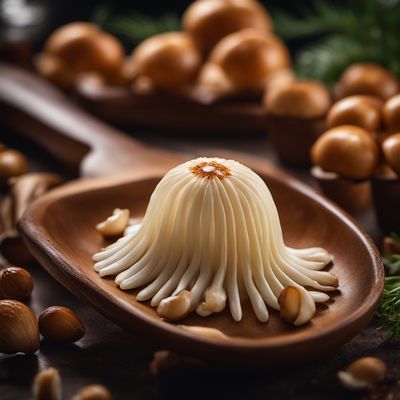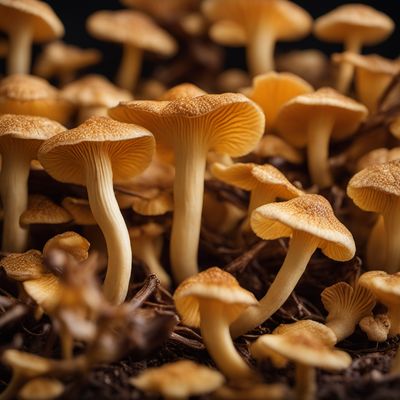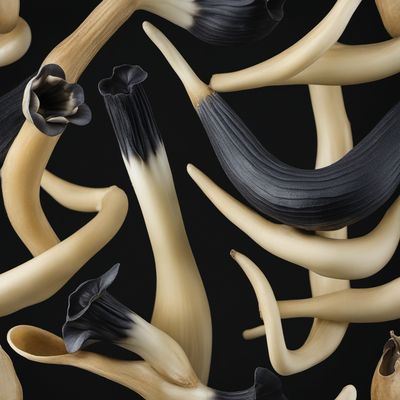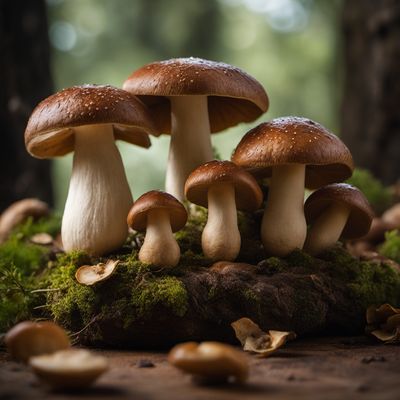
Ingredient
Hedgehog mushrooms
Exquisite Earthiness: Hedgehog Mushrooms
Hedgehog mushrooms have a pale to medium brown cap with a spiky or tooth-like surface, resembling a hedgehog's back. They have a firm yet tender texture and a delicate, earthy flavor with hints of nuttiness. These mushrooms are often used in sautés, risottos, and pasta dishes, adding a subtle and complex taste to the preparations.
Origins and history
Hedgehog mushrooms are native to Europe and North America, where they grow in deciduous and coniferous forests. They have a long history of culinary use, particularly in European cuisines. Foragers have been harvesting these mushrooms for centuries, appreciating their unique appearance and flavor. Hedgehog mushrooms are also known for their medicinal properties and have been used in traditional medicine for their potential health benefits.
Nutritional information
Hedgehog mushrooms are low in calories and fat, making them a healthy addition to meals. They are a good source of dietary fiber, vitamins, and minerals, including potassium and copper.
Allergens
May cause allergic reactions in some individuals.
How to select
When selecting hedgehog mushrooms, look for ones that are firm and free from any signs of decay or discoloration. The cap should be intact and not overly dry. Additionally, choose mushrooms with vibrant colors and avoid any that have a strong or unpleasant odor. If foraging, ensure you have proper identification skills or consult an expert to avoid picking toxic mushrooms.
Storage recommendations
To maintain the freshness of hedgehog mushrooms, store them in a paper bag or a breathable container in the refrigerator. Avoid storing them in plastic bags, as they can become slimy. Use them within a few days of purchase for the best flavor and texture. If foraged, consume them as soon as possible to enjoy them at their peak.
How to produce
Hedgehog mushrooms can be challenging to cultivate due to their mycorrhizal nature, which requires a symbiotic relationship with specific tree roots. However, they can be grown in controlled environments, such as mushroom farms or home cultivation kits, by mimicking their natural habitat conditions. This process involves providing the appropriate substrate, temperature, and humidity for successful cultivation.
Preparation tips
Before using hedgehog mushrooms, gently clean them with a soft brush or a damp cloth to remove any dirt or debris. Avoid soaking them in water, as they can absorb excess moisture. Hedgehog mushrooms can be sautéed, roasted, or added to soups, stews, risottos, or pasta dishes. Their delicate flavor pairs well with herbs, garlic, butter, and cream-based sauces. They can also be dried or preserved for later use.
Culinary uses
Hedgehog mushrooms are versatile and can be used in various culinary applications. They are often sautéed with garlic and herbs, added to risottos or pasta dishes, or used as a topping for pizzas. Their delicate flavor enhances the overall taste of the dishes, providing a subtle earthiness.
Availability
Hedgehog mushrooms are commonly found in Europe and North America, particularly in deciduous and coniferous forests. They can also be cultivated in controlled environments, such as mushroom farms or home gardens.
More ingredients from this category

Saint George's mushrooms
The Forest Delicacy

Other wild fungi
Exploring the Hidden World of Wild Mushrooms

Honey mushroom
The Golden Fungus

Chanterelles
Golden Delicacy

Saffron milk cap
The Golden Delicacy: Unveiling the Secrets of Saffron Milk Cap

Truffles
The Earth's Edible Gems

Scotch bonnet mushrooms
Fiery Delights: Unleashing the Flavors of Scotch Bonnet Mushrooms

Morels
The Earthy Delicacy

Horns of plenty
Exploring the Delights of Horns of Plenty

Ceps
The King of Mushrooms

Gypsy mushroom
The Enigmatic Delicacy: Gypsy Mushroom